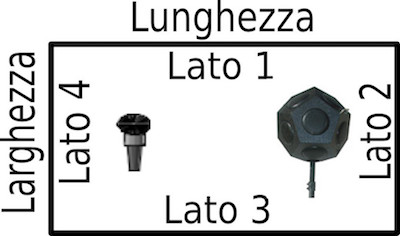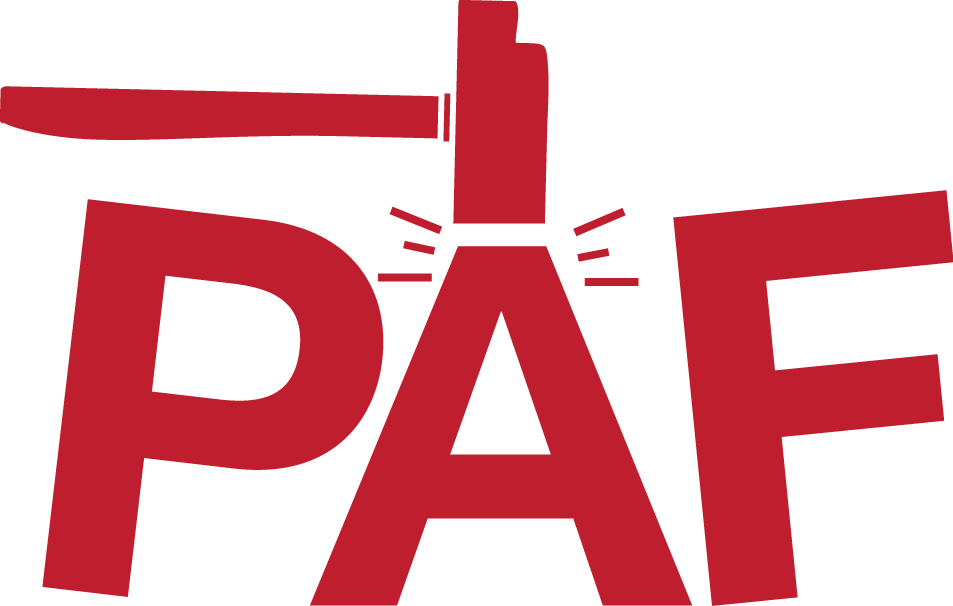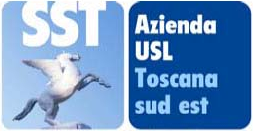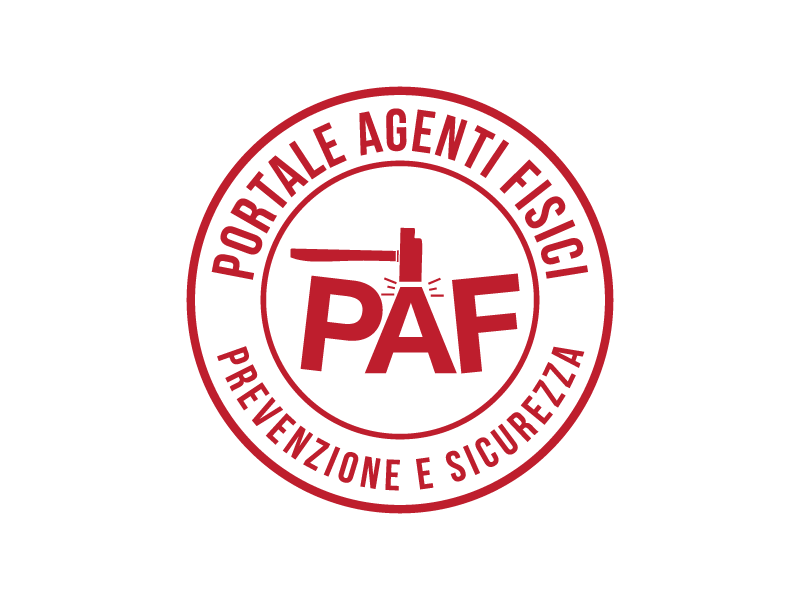REVERBERATION TIME CALCULATOR
What is the reverberation time?
The reverberation time is one of the main acoustical parameters that contributes to the well-being of people that occupy an environment, in particular all those working environments where verbal communication and listening are required.
In a reverberant field, if a sound source suddenly stops emitting, the sound does not stop as quickly, but proceeds, due to the reflections on the surfaces (reflected echoes), for a certain amount of time.
The decay time, called “REVERBERATION TIME”, depends on the speed of the sound, on the distance from the walls and on the number and quality of the reflecting surfaces, and thus on their sound-absorption capability.
In rooms with highly reflecting walls, such as classrooms or canteens that have not been covered with sound-absorbing materials, the reverberation lasts a long time, whereas in rooms with walls covered with highly sound-absorbing materials the reverberation time is lower. It is important that the reverberation time be appropriate to the intended use of the environment. A very long reverberation time causes loss of intelligibility and increases the background noise.
Minimum requirements for school rooms and places
In schools, noise directly influences the speech of teachers and the listening conditions of students, with consequences on teachers tiredness, on learning in the school and with possible important repercussions on health due to the extra-aural effects of noise.
Excessive noise in community environments which are intended for word listening determines a reduced intelligibility throughout two mechanisms: sound masking and reduced audience attention. Reverberation, besides reducing intelligibility for the audience, influences the adjustment of the speaker's voice volume, and therefore increases his/her tiredness.
In other kinds of environments where activities other than word listening are mainly carried out, the reverberation time can still play an important role; as an example, take the stressful situation of a crowded and reverberant canteen where, due to the difficulty in understanding vocal messages and in making oneself understood, one ends up increasing the volume of the voice, thereby contributing to the increase of the background noise, that can reach potentially harmful levels for the auditory system.
Room acoustic parameters are not governed by European Directives, but some national regulations define values based on room dimensions and occupancy. EN ISO 11690 – 1 recommends the following values: T r < 0.8 s for a room volume < 200 m 3 , T r < 1.3 s for a room volume < 1000 m 3 and DL 2 > 3 or 4 for a greater room volume.
Compliance with these values should guarantee the intelligibility of verbal communication without needing to communicate with an altered voice, and, in the same time, the reduction of exposure to noise produced in the environment by internal sources (verbal communication or machines).
Description and usage of the Online Calculator
The online calculator allows us to estimate the reverberation time of a room based on the construction features (volume and building materials) by making it easy to compare the results with the limit values. The method is appropriate for typical community environments (e.g. school buildings, play rooms, offices etc.), but it is not intended to be used for very large or irregularly-shaped spaces, such as theatres or industrial warehouses.
The software is based on the methods defined in the standard EN 12354-6-2003. The standard does not declare the uncertainty of the method, because this depends on multiple factors related to the geometry and volume of the rooms, to the building materials etc..
The ad hoc validation performed by our laboratory on a sample of 36 buildings in rooms with a volume from 150 m3 to 2000 m3 showed that the maximum deviation of the measured values from the estimated values is:
lower than 0.5 s for estimated reverberation times from 1.5 s to 2 s
lower than 0.8 s for estimated reverberation times from 2.5 s to 4.5 s
The calculator includes a database of the building materials, with the sound absorption coefficients in octave bands of the most common building materials, including those reported in appendix B of the standard EN 12354-6:2003. Furthermore, the most common materials available on the market displaying particular sound-absorbing features have been included.
Therefore the calculator can be useful both in the project validation phase and in the monitoring phase, in order to easily detect situations that do not comply with the acoustic requirements prescribed by the current regulations.
Thanks to the built-in database of sound-absorbing materials, the calculation tool can also be useful to assess possible remediation interventions in existing rooms: e.g. the material of the ceiling could be replaced by a sound-absorbing material selected in the drop-down menu and, by repeating the calculation of the reverberation time, the suitability of this theoretical remediation intervention can be assessed.
ENTERING DATA
The user is first required to choose the kind of envirnoment. The selectable environments are: classrooms, canteens, gymnasiums and swimming pools.
After that, the user should enter the size of the room in meters: width, depth and height.
Subsequently, the user should specify the building material of each surface (indicated as "Side n.") by selecting it in the drop-down menu of the table for data entry reported below.
It should be considered that:
in the table, the surfaces called "Side 1" and "Side 3" have the area of "Width" x "Height"
in the table, the surfaces called "Side 2" and "Side 4" have the area of "Depth" x "Height"

For each side, both the main material and the percentage of its surface compared to the total area should be specified in the "Main" line. In the "Secondary" line, the secondary material should be indicated. If only one building material is used, the main material will be assigned the value of 100%.
The "secondary" line should be filled anyway by selecting the secondary material, that, in this case, will be the same as the main one. Therefore, the software will take into account only the main material.
N.B. The software requires that both materials, the main and the secondary ones, are always selected. The calculation is not performed if a material is "Unknown":
Material description
| Surfaces | Material | Percentage of the main material | ||
|---|---|---|---|---|
| Side 1 | Main | % | ||
| Secondary | ||||
| Side 2 | Main | % | ||
| Secondary | ||||
| Side 3 | Main | % | ||
| Secondary | ||||
| Side 4 | Main | % | ||
| Secondary | ||||
| Ceiling | Main | % | ||
| Secondary | ||||
| Vehicle floor | Main | % | ||
| Secondary | ||||
The calculator provides, as an output data, the reverberation time in the octave bands from 124 to 4000 Hz, as calculated, for each octave, according to the Arau formula:
Where V and S are, respectively, the volume and the total surface of the environment; x, y and z the total surfaces of the couple of opposite walls that are oriented on the same axis.
The reverberation time obtained by this calculation is then compared with the optimal values of the appendix C3 of the UNI 11367 in accordance with the kind of environment selected.
Further more, the calculator performs a check on every single band from 250 to 4000 Hz. The following results are possible:
| Condition | Result of the assessment |
| The mean value for reverberation in the bands at 500 and 1000 Hz differs less than 20% from the optimal one and the reverberation time for each band from 250 Hz to 4000 Hz is lower than 1.2 times the optimal reverberation time. | Compliant with the requirements set in the standard UNI 11367 for this kind of environment. |
| The mean value for reverberation in the bands at 500 and 1000 Hz differs less than 20% from the optimal one, but the reverberation time for at least one band from 250 Hz to 4000 Hz is higher than 1.2 times the optimal reverberation time. | The mean value of the reverberation time is compliant with the requirements set in the standard UNI 11367 for this kind of envirnnment, but the reverberation time exceeds the one suggested in UNI 11367 in one band at least. |
| The mean value for reverberation in the bands at 500 and 1000 Hz differs more than 20% from the optimal one. | Non-compliant with the requirements set in the standard UNI 11367 for this kind of environment. |








